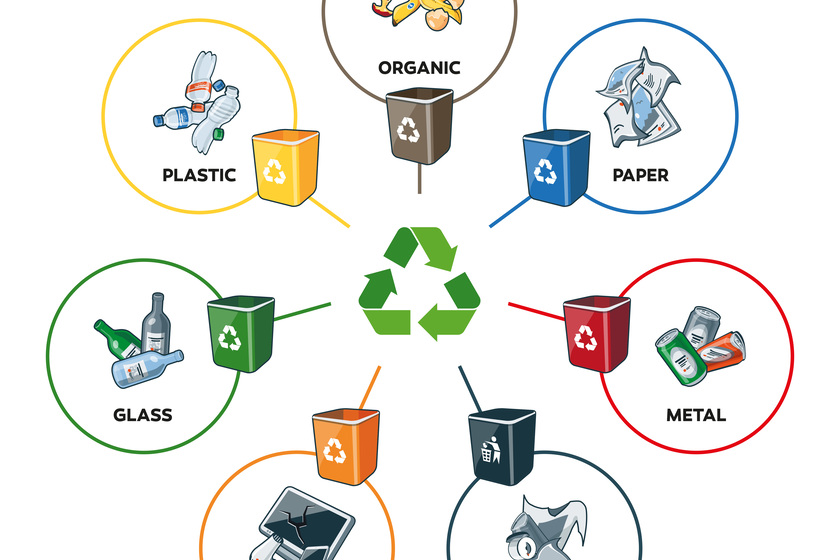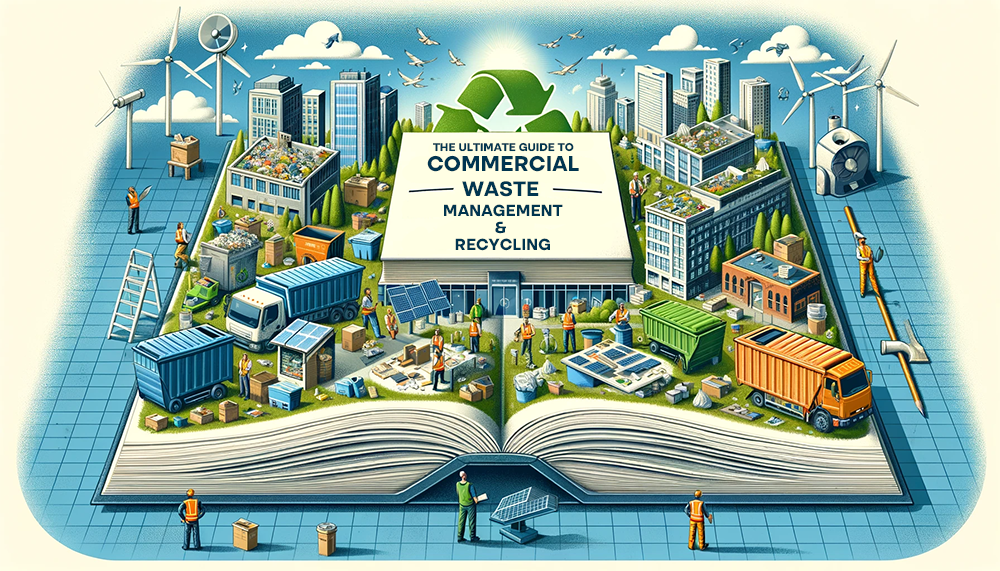The Influence of Recycling Lives Services on Communities and the Setting
The Influence of Recycling Lives Services on Communities and the Setting
Blog Article
Exploring Different Sorts Of Waste in Modern Waste Monitoring Solution
The modern landscape of waste administration involves navigating an intricate selection of waste kinds, each requiring specialized handling and disposal techniques to minimize environmental influences. Community strong waste, dangerous waste, electronic waste, and natural waste each present distinct obstacles and chances for source recuperation.
Community Strong Waste
Municipal solid waste, typically referred to as house trash or trash, includes a range of thrown out materials produced by residential, industrial, and institutional sources within a municipality. This waste stream commonly includes items such as packaging, food scraps, lawn trimmings, paper, plastics, fabrics, and thrown out household goods. The administration of community strong waste is a crucial part of city preparation and public health, demanding reliable collection, transport, and disposal systems.
Effective waste administration systems are created to decrease environmental effect while making best use of resource healing. Composting natural waste, such as food scraps and backyard trimmings, not just decreases garbage dump usage but also produces beneficial dirt changes.
Municipalities have to also address the financial and logistical difficulties connected with waste administration. Implementing pay-as-you-throw systems, improving public recognition, and purchasing technology can considerably enhance waste diversion rates. By incorporating these techniques, municipalities can cultivate lasting communities, reduce greenhouse gas emissions, and preserve natural deposits.
Contaminated Materials

Effective dangerous waste monitoring involves numerous critical actions: recognition, disposal, partition, and therapy. Recognition requires the classification of waste based upon its unsafe homes. Segregation guarantees that harmful products are kept separately from non-hazardous waste to stop cross-contamination. Therapy approaches, such as chemical neutralization, incineration, and stablizing, are utilized to minimize the poisoning, quantity, or wheelchair of the waste. Ultimately, disposal options, including secure landfills and below ground storage space, are chosen to make certain lasting containment.
Governing structures, such as the Source Conservation and Healing Act (RCRA) in the USA, give standards and standards for dangerous waste monitoring. Adherence to these regulations, paired with developments in waste therapy innovations, is necessary in reducing the risks linked with contaminated materials.
Electronic Waste
Electronic waste, generally referred to as e-waste, represents a swiftly expanding obstacle in waste management systems around the world. This type of waste encompasses thrown out electronic devices and equipment such as mobile phones, computers, televisions, and various other digital home appliances. The quick rate of technical development, paired with reducing product lifespans and consumer need for the most recent gadgets, has actually exponentially increased the quantity of e-waste created yearly.
E-waste is specifically troublesome as a result of its complicated structure, frequently consisting of unsafe substances like lead, cadmium, and mercury, which position significant environmental and health and wellness threats if not appropriately handled. Conversely, e-waste also has valuable products such as copper, gold, and silver, which can be recuperated and reused. The twin nature of e-waste-- both hazardous and useful-- requires specialized handling, recycling, and disposal procedures.
Efficient e-waste management entails rigid governing structures, durable collection systems, and progressed reusing technologies. Public understanding and involvement are important, as improper disposal methods, such as unlawful disposing and casual recycling, worsen environmental contamination and health and wellness hazards. As a result, enhancing e-waste administration techniques is essential for minimizing ecological effect and recovering valuable resources in an increasingly digital world.

Organic Waste
Organic waste, consisting of kitchen scraps, yard trimmings, and agricultural check residues, stands for a substantial section of the international waste stream. This kind of waste is eco-friendly, implying it can be damaged down by microorganisms into less complex natural substances. In spite of its possibility for all-natural disintegration, inappropriate administration of organic waste can cause adverse environmental impacts, including the exhaust of greenhouse gases such as methane, which add to climate modification.
Efficient management of organic waste is critical for lessening these environmental effects (recycling lives services). Composting is a widely taken on approach, transforming natural waste right into nutrient-rich garden compost that can boost soil wellness and agricultural efficiency. In addition, anaerobic digestion is an arising technology that converts natural waste into biogas, a renewable resource source, and digestate, which can be utilized as plant food
Municipalities and waste administration entities need to execute durable natural waste collection and treatment programs to make best use of the benefits of these processes. Public education and learning campaigns can also play a critical role in encouraging houses and services to separate organic waste from various other sorts of waste. By prioritizing the administration of organic waste, cultures can lower land fill usage, reduced greenhouse gas discharges, and develop important by-products for agricultural usage.

Ingenious Waste Management
In the realm of waste administration, innovative techniques are transforming just how cultures handle their refuse, going for sustainability and effectiveness. These improvements incorporate a variety of modern technologies and practices that improve reusing rates, minimize landfill dependency, and lower ecological influence. One famous development is the implementation of clever waste bins furnished with sensing units that check fill levels and enhance collection courses. browse around this web-site This not just decreases gas usage but likewise lessens greenhouse gas discharges.
One more noteworthy advancement is the adoption of waste-to-energy (WtE) modern technologies. By transforming non-recyclable waste into usable power through procedures such as incineration and anaerobic digestion, WtE reduces garbage dump burden and provides an eco-friendly power source. Improvements in chemical recycling allow for the break down of complicated plastics right into their original monomers, allowing the creation of new, premium plastic products.
Furthermore, the round economic climate version is obtaining grip, stressing the design of products and systems that focus on a knockout post reusability and resource performance. This all natural strategy encourages markets to decrease waste generation from the start. Via these innovative strategies, contemporary waste monitoring systems are not just addressing the instant difficulties of garbage disposal however also leading the way for an extra sustainable future.
Conclusion
A thorough understanding of local strong waste, harmful waste, digital waste, and organic waste, coupled with the application of innovative waste monitoring services, is critical for reducing environmental impacts. Integrating technologies such as clever waste bins and waste-to-energy systems can improve performance and sustainability. Reliable waste monitoring methods not only foster source healing yet additionally advertise public recognition and participation, ultimately contributing to the advancement of a round economic situation.
The contemporary landscape of waste management entails navigating a complicated variety of waste types, each calling for specialized handling and disposal methods to mitigate ecological influences. Community solid waste, harmful waste, digital waste, and organic waste each present distinct challenges and chances for resource recuperation.Electronic waste, generally referred to as e-waste, represents a rapidly expanding difficulty in waste management systems around the world. With these ingenious strategies, modern waste management systems are not only resolving the immediate obstacles of waste disposal yet also paving the method for an extra lasting future.
A thorough understanding of local strong waste, hazardous waste, electronic waste, and organic waste, coupled with the application of innovative waste administration services, is essential for minimizing environmental effects. (recycling lives services)
Report this page